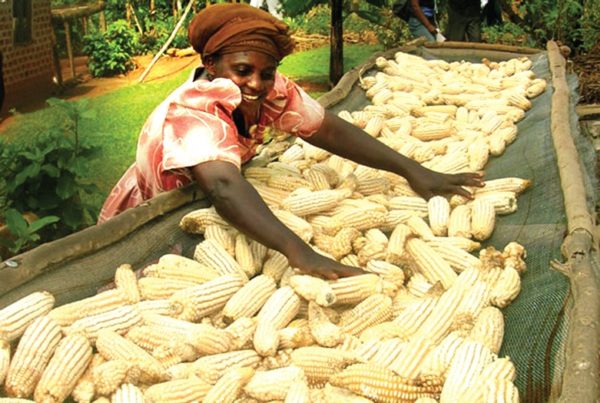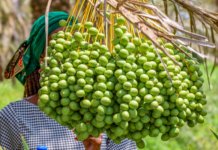To compensate for the 25% loss in maize and output of other crops last season, Zambia has maintained the number of beneficiaries of the fertilizer Support Programme in the 2022/23 season to bolster production, says agriculture minister Reuben Mtolo.
Last year, minister Mtolo had told lawmakers that the it was the desire of the Government to place 1, 024, 434 farmers on the FISP this year like was the case a year earlier and would each benefit six bags of fertilizer and a pocket of 10kilogrampack of seed per farmer in the 2023 season.
According to the projections, Zambia seeks to reverse the losses incurred the previous season because of among other factors delayed input distribution and that the estimated 1 million farmers, to be recruited in various parts of the country are expected to grow a variety of food including groundnuts, soya beans and legumes that have been added to the agriculture pack under the FISP.
Food forecast for the Southern African state and leading regional producer of maize dropped nearly 25% to 2.7 million tons in the 2021/2022 crop season from 3.6 million tons the previous season spurred by a reduction in the area planted and lower yields, minister Mtolo told FRA.
He allayed fears of food insecurity following a drop in the food output arguing that the country had a carryover stock of 1.5 million tons held by farmers, millers, grain traders and the nation’s Food Reserve Agency.
Earlier lawmakers, were in a ministerial statement by minister Mtolo, advised that the 1 million small holder farmers being maintained will remain beneficiaries and that each farmers would remit K400 US$60 as contribution to enhance access to inputs
The government had decided that the FISP for the next agriculture season will be implemented using the direct input supply modality to allay uncertainty surrounding the Russia-Ukraine war which has affected fertilizer supply on the global market.
“Revision of the input pack under the program will be as follows: a total of six bags of fertilizer per farmer will be given out of which three will be basal dressing and three top dressing. A 10 kg of maize seed will be given to all the beneficiaries.”
“A supplementary bag of either 1 by 25 kg of soya bean seed or 1 by 20 kg of groundnut seed will be given to half of the group meaning 500, 000 farmers will get soya beans and the other 500, 000 will get groundnuts,” the minister said in a statement.
Earlier country’s agriculture think tank-the Indaba Agriculture Policy Research Institute (IAPRI) Senior Research Fellow Dr. Brian Mulenga in his 2021/2022 Crop Forecast Results and Food Balance sheet presentation noted that the season had significantly dropped below average from October 2021 to January this year citing the global and regional input prices that have risen steeply caused by the strained supply chain resulting from the COVID-19 Pandemic.
The expected rise in food prices was likely to hurt the poor, thus need for well-targeted social protection measures. During the meeting, minister Mtolo Phiri had announced that maize production for the 2021/2022 production season was expected to reduce by 25.24% from 3,620,125 Metric Tons (MT) in 2020/2021 to 2,706,243 MT in 2021/2022.
During the period under review, soya beans production was expected to increase by 15.63% from 411,115 MT to 475,353 MT, the highest the country has ever recorded. The smallholder farmers accounted for 96% of the total maize production for the 2021/2022 season while the commercial farmers accounted for only 4%.
The Minister assured maize and farmers o various crops intended for export of an open border policy in-line with the regional and international trade protocols. According to regional estimates, a ton of white maize is fetching around US$260.
The country’s largest farming group seeks to maximize to generate foreign exchange and recover investments in the sector.








